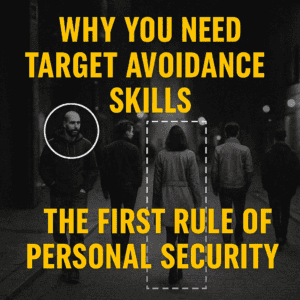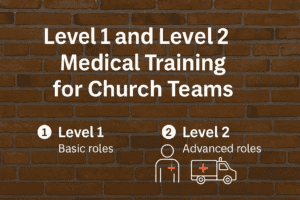Attracting Assault is a concept that has been studied for decades to better understand the dynamics between perpetrators and victims in assault situations.
Researchers have analyzed various factors such as nonverbal cues, body language, and vulnerability, aiming to identify patterns that may make an individual more likely to be targeted for assault.
For instance, an early study from 1981 discussed the role that victims’ nonverbal cues play in attracting assault, shedding light on possible factors that could contribute to such occurrences.
In recent years, the subject has expanded further, with studies focusing on the context of different environments such as universities, where incidents of assault are sadly not uncommon.
More specifically, researchers have examined the interplay between an individual’s body language and the judgments of others regarding their vulnerability to assault.
One such study experimentally explored the effect that body language has on people’s perceptions of whether someone may be likely to fall victim to sexual assault.
An understanding of these factors is crucial in our efforts to create safer environments and develop effective prevention strategies.
Through continuous research on this subject matter, we will be better equipped to address the problem and protect potential victims from assault.
Understanding Assault
Types of Assault
Assault can be classified into several types based on factors such as the level of violence involved, the intent of the perpetrator, and the relationship between the victim and the offender:
- Simple Assault: A non-aggravated form of physical assault, generally involving minor injuries or threats of physical harm without the use of a weapon.
- Aggravated Assault: A more severe form of assault involving the use of a weapon or causing serious injuries to the victim.
- Sexual Assault: A category of assault that involves non-consensual sexual contact or behavior, which can range from unwanted touching to rape. A study on sexual assault cases offers insights into the pervasive nature and extent of this type of crime.
- Domestic Assault: Occurs when an individual uses physical violence or threatens harm within the context of an intimate or family relationship.
Psychology Behind Assault
The psychology behind assault involves complex interactions of social, environmental, and individual factors.
Perpetrators may be motivated by a need for power and control, retaliation, or addressing perceived injustices.
In some cases, criminal behavior can be attributed to psychopathy, a personality disorder characterized by a lack of empathy, remorse, and conscience.
It is essential to note that not all individuals with psychopathic traits commit violent crimes, though their presence can be a contributing factor for some offenders.
In the context of sexual assault, research indicates that factors such as peer support, desensitization to violence, and the objectification of individuals may contribute to the perpetuation of this crime.
For example, a book exploring sexual assault on college campuses discusses the role of male peer support in understanding sexual violence.
Traits of Perpetrators
While it is challenging to create a definitive profile for assailants, certain traits can be observed across various forms of assault.
Perpetrators may have:
- A history of antisocial behavior
- Low self-esteem
- Poor impulse control
- Substance abuse issues
- Experiences of unresolved trauma or victimization
Additionally, in cases of sexual assault, factors such as beliefs about gender roles, sexual entitlement, and misperceptions about a victim’s consent can also influence the likelihood of an individual committing this crime.
Victimology
Victimization Process
The victimization process encompasses the various ways in which individuals become victims of crime.
This typically involves the interaction between the victim, offender, and environment in which the crime occurs.
A key factor in understanding victimization is the concept of victim potential, which refers to the likelihood that an individual may become a victim of crime.
Factors that influence victim potential include demographic characteristics, lifestyle choices, and routine activities.
Various theories have been proposed to explain the victimization process, including the Routine Activities Theory and Lifestyle Exposure Theory.
Both theories suggest that the likelihood of victimization is influenced by the victim’s daily activities and exposure to potential offenders.
For example, individuals who spend more time in public spaces or engage in risky behaviors may have a higher victim potential.
Victim Precipitation Theory
The Victim Precipitation Theory posits that some individuals may contribute to their own victimization through their behaviors or actions.
This theory is especially relevant to understanding the relationship between victims and offenders in crimes of personal violence, such as assault.
According to this theory, there are two types of victim precipitation:
- Active Precipitation: The victim initiates or provokes the offender, leading to the crime. Examples include aggressive behavior, verbal insults, or initiating physical contact.
- Passive Precipitation: The victim inadvertently attracts the attention of the offender, without directly provoking them. This may involve displaying vulnerability or other perceived weaknesses that make them a target for offenders.
It is important to note that victim precipitation does not imply that the victim is responsible for the crime or that the offender’s actions are justified.
Rather, it highlights the complex dynamics between victims and offenders and aims to enhance our understanding of the situational factors that contribute to victimization.
Nonverbal Communication
Importance of Nonverbal Cues
Nonverbal communication plays a crucial role in human interactions and can significantly impact our perception of others.
It encompasses various forms of expressions, such as body movements, gestures, facial expressions, and eye contact.
These nonverbal cues can convey a wealth of information about an individual’s emotions, intentions, and even their vulnerability.
In the context of attracting assault, understanding the importance of nonverbal cues is essential for both potential victims and those who aim to prevent violent incidents.
By becoming aware of the signals one might inadvertently send through nonverbal communication, individuals can learn to modify their behavior and reduce their risk of becoming a target.
Analyzing Victim’s Nonverbal Cues
According to a study involving prison inmates convicted of assault, certain nonverbal cues can make an individual more likely to be perceived as a potential victim.
These cues include body language, such as slumped shoulders or lack of eye contact, which might indicate vulnerability or low self-confidence.
Here are some common nonverbal cues that can increase an individual’s likelihood of becoming a victim:
- Body language: Slumped or hunched posture, lack of eye contact, and keeping one’s head down
- Gestures: Fidgeting, avoiding expansive movements, or holding oneself in a defensive manner
- Facial expressions: Lack of expressiveness or displaying fear, worry, or discomfort
It is important to remember that these cues are not definitive indicators of vulnerability, and not everyone who exhibits these behaviors will become a victim.
However, maintaining an awareness of one’s nonverbal communication and being mindful of the messages one may be inadvertently sending can potentially decrease the likelihood of attracting unwanted attention or assault.
Based on this, we often recommend adopting assertive and confident body language to deter potential attackers and increase personal safety.
Biological Motion Studies
Gait Analysis
Biological motion research has focused on studying the human gait and its different aspects. One of the key factors analyzed in gait studies is gait variability.
It relates to the natural fluctuations in gait, such as step length, stride time, and other parameters that occur as a person walks or runs.
Research on victim selection and kinematics has found a connection between gait variability and the perception of vulnerability to attack.
Individuals with higher gait variability are perceived as more vulnerable, making them potentially more attractive targets for assailants.
Gait variability can be influenced by various factors such as age, gender, physical condition, and locomotion speed.
A study on ensemble coding of crowd speed using biological motion revealed that intact biological motion perception is influenced by locomotion speed, suggesting that faster walkers might attract less attention from potential attackers due to their perceived confidence and lower vulnerability.
Movement Patterns
Apart from gait analysis, biological motion studies also explore different movement patterns in humans and animals.
Understanding movement patterns can provide valuable insights into predicting and possibly preventing assault incidents.
Research on self-organized fish schools demonstrates how certain movements and interactions within a group can lead to emergent properties like collective behavior, which can be translated to human crowds and social situations.
In the context of attracting assault, analyzing movement patterns can help identify individuals who stand out in a crowd or have unusual behavior, potentially making them a target.
Moreover, examining the interaction between individuals in a group can reveal underlying dynamics that affect the group’s overall vulnerability.
For instance, studies on aggression reveal a significant relationship between temperature and human violence, giving clues about contextual factors that may influence an individual’s movements and ultimately their likelihood of being assaulted.
Personal Safety Strategies

Developing Situational Awareness
Situational awareness is a crucial aspect of personal safety. This concept involves being aware of one’s surroundings, understanding potential threats, and knowing how to avoid or minimize risks.
One strategy is to stay alert by avoiding distractions, such as using your phone or constantly looking at the ground while walking.
Another aspect is understanding the basics of human behavior and recognizing suspicious actions or signals from others.
For example, someone following someone too closely for an extended period or anxiously scanning their environment.
By developing these skills, individuals can effectively identify potential risks and take steps to avoid dangerous situations.
Personal Safety Training
In addition to situational awareness, it is essential to undergo personal safety training.
Risk Strategy Group, in addition to other vetted entities, offers various programs that teach self-defense techniques, escape strategies, and other measures to increase personal safety.
These programs can be tailored for different age groups, genders, and physical abilities.
Training may cover the following topics:
- Physical self-defense: Learning techniques to defend oneself, such as kicks, punches, and blocks, can help in case of a physical assault.
- Verbal self-defense: This includes de-escalating confrontations or deterring an attacker through assertive communication and verbal tactics.
- Safety plan: Developing a plan for various situations, such as work, social outings, or while traveling, can help minimize risks and ensure one’s safety.
It is also useful to be prepared with personal safety devices, such as personal defense weapons, pepper spray, etc. These can provide an extra layer of protection in case of an emergency.
Conclusion
In summary, research on attracting assault provides valuable insights into the dynamics between perpetrators and victims, highlighting the role of nonverbal cues, body language, and perceived vulnerability in increasing the risk of victimization.
While these findings do not justify the perpetrator’s actions or blame the victim, they are crucial for developing effective prevention strategies.
Here are some practical tips:
- Be Aware of Nonverbal Cues: Understand that body language, such as confident posture and maintaining eye contact, can reduce perceived vulnerability.
- Enhance Situational Awareness: Stay alert and attentive to your surroundings, minimizing distractions like smartphone usage, especially in unfamiliar or risky environments.
- Learn Self-Defense: Consider taking self-defense classes that teach both physical and verbal techniques to deter potential attackers.
- Develop a Safety Plan: Have a strategy for different situations, including work, social outings, or travel. This plan should include knowing the safest routes and having emergency contacts readily available.
- Understand Victimology: Recognize that victimization is complex and influenced by various factors, including lifestyle and daily routines. Adjusting these can decrease the risk of becoming a target.
By applying these tips and understanding the research behind attracting assault, individuals can take proactive steps to enhance their personal safety and reduce the likelihood of becoming victims of assault.








